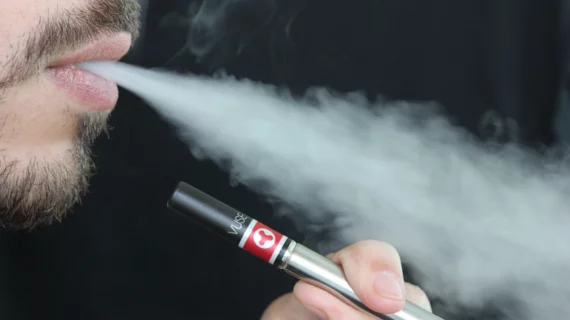E-cigarette flavorings linked to cardiovascular disease
New research suggests flavorings in electronic cigarettes, or e-cigarettes—including mint, vanilla, cinnamon and strawberry—can adversely affect endothelial cells, according to a study published June 14 in Arteriosclerosis, Thrombosis, and Vascular Biology.
The researchers, led by Jessica L. Fetterman, PhD, of Boston University School of Medicine, tested endothelial cells from nine non-smokers, six non-menthol smokers and six menthol e-cigarette smokers.
They found that when both groups of smokers’ blood vessels were exposed to nine different flavoring additives—with vanillin, menthol, cinnamaldehyde, eugenol, dimethylpyrazine, diacetyl, isoamyl acetate, eucalyptol, and acetylpyrazine—A23187-induced nitric oxide production, to promote blood flow was decreased. This, in turn, increased inflammation indicating short-term toxicity.
“Increased inflammation and a loss of nitric oxide are some of the first changes to occur leading up to cardiovascular disease and events like heart attacks and stroke, so they are considered early predictors of heart disease,” Fetterman said in a statement. “Our findings suggest that these flavoring additives may have serious health consequences.”
The researchers also found that endothelial cells from smokers showed the same toxicity as those treated with flavoring chemicals, which the researchers said is consistent with prior literature showing that nonmenthol and menthol cigarette smokers have a similar degree of cardiovascular risk.
“We provide evidence that flavoring additives to tobacco products impair stimulated nitric oxide production and inflammation suggestive of endothelial dysfunction across a range of concentrations likely to be achieved in vivo,” wrote Fetterman and colleagues. “All flavorings tested impaired A23187-induced nitric oxide production, suggesting that measures of eNOS activation and nitric oxide production are sensitive measures of endothelial cell toxicity in vitro.”
The research directly tested the effects of the flavorings at levels that would probably be reached in the body. Some limitations included the flavorings were not heated to test the impact on endothelial cells. Additionally, the researchers only assessed the flavorings’ short-term effects and also did not measure the impact inside the body.
“The toxicity data generated herein, using a variety of common flavorings, provide quantitative support for the regulatory prohibition or the establishment of limitations on allowable levels of these flavorings in electronic liquids and other tobacco products,” Fetterman et al wrote. “Future studies will focus on how the toxicity of the flavorings is altered with heating and characterization of the levels obtained in the circulation after use of an e-cigarette.”

